Godzilla Mothra And King Ghidorah: Giant Monsters All-Out Attack (2001)
Directed by: Shûsuke Kaneko
Written by: Kei'ichi Hasegawa, Masahiro Yokotani
Starring: Chiharu Niiyama, Masahiro Kobayashi, Ryûdô Uzaki, Shirô Sano
HCF REWIND NO. 207: GODZILLA, MOTHRA AND KING GHIDORAH: GIANT MONSTERS ALL-OUT ATTACK AKA GOJIRA, MOSURA, KINGU GIDORA: DAIKAIUJU SOKEGEKI [Japan 2001]
AVAILABLE ON DVD
FEATURED MONSTERS: GODZILLA, MOTHRA, KING GHIDORAH, BARAGON
RUNNING TIME: 105 min
REVIEWED BY: Dr Lenera, Official HCF Critic
Decades after Godzilla’s first attack in 1954 where he was defeated by an unknown chemical compound, anecdotal evidence of other monsters starts to pour in from across the globe, and an attack by a large, reptilian creature is even confirmed in New York City in 1998. In 2001, a submarine is destroyed. Yuri Tachibana, the daughter of the Admiral in charge of the JSDF, is filming a docudrama with her crew at Mt. Myoko where an earthquake randomly ensues and an old man in traditional robes appears and then disappears into thin air. Later, another earthquake happens and a monstrous red face is seen, while elsewhere some teenagers are disturbed by Mothra coming out of the sea. Yuri’s adviser locates a book that describes prophecies similar to the course of events which were presently unfolding, telling of three legendary beasts known as the Guardian Monsters: Baragon, Mothra, and Ghidorah. Yuri finds and interviews the old man. He foretold the return of Godzilla, and says that the Guardian Monsters must be awakened before Godzilla destroys Japan…..
Godzilla, Mothra and King Ghidorah: Giant Monster’s All- Out Attack, which may also have the most unwieldy title ever for a Godzilla film, is considered by many fans to be one of the best ever Godzilla movies. Now if you’ve been a reader of HCF for long enough you’ll know this writer is sometimes prone to opinions that are different from the norm, a good example being Christopher Nolan’s Batman films, which strike me as being very ordinary and for which I just can’t understand the love. The third film in the Millennium series is an entertaining, action-packed Godzilla movie, but I don’t think it’s anything special, and, while it does have a few original ideas, they’re not always done that well and tend to get lost in the rehashing from earlier films. Overall, it’s nowhere near as original as you may have heard, and while originality is hardly a major feature of the Godzilla series, people seem to be really exaggerating the supposed originality of this instalment which only exists here and there. The plot ends up not making much sense and I will always remember finishing my first viewing of this film, which had already received a lot of praise, and saying to myself: “Is that it”? There’s much fun to be had, to be sure, but the film just doesn’t entirely work and is terribly uneven, great ideas and scenes alternating with poor ones, and technically it’s very uneven too.
It’s a sad feature of more recent Godzillas that films introducing new monsters don’t tend to do as well as ones which bring back old ones. Godzilla 2000 and Godzilla Vs Megaguirus had done disappointing business, so Toho decided to resurrect some old faces. Shusuke Kaneko had done a great job with his Gamera trilogy for Daiei, so Toho picked him to write and direct their next Godzilla film, though his original plans for the movie, which saw an astronaut return from a mission to find himself transforming into a giant monster to fight Godzilla, were nixed. He then wrote a treatment bringing back the monsters Anguirus, Baragon and Varan, as well as the super-submarine Atragon from the movie of the same title. Toho told him to replace Anguirus and Varan with the more popular Mothra and King Ghidorah, but the tale remained the same, creating some serious problems. Atragon was also later replaced by a more conventional craft, one of several changes to make things more realistic. Kei’ichi Hasegawa and Masahiro Yokotani worked with Kaneko on the script. Disappointed that Varan, one of his favorite monsters, was scrapped from the project, monster designer Fuyuki Shinada compromised by putting Varan’s facial features on King Ghidorah’s three heads. Godzilla was played by Mizuno Yoshida instead of the Millennium series’s usual Tsutomu Kitagawa. The premier had unfinished special effects shots and an incomplete score, but the finished film was considerably more commercially successful than the last two Godzilla films. Many fans loved it, though some hated it. Me….I’m kind of in the middle, though considering how much I love this franchise, being in the middle just isn’t really very good!
So once again Godzilla’s history is altered. We’re now told that Godzilla’s attack in 1954 was his only one up to now, though we do have an amusing jab at the US 1998 film when someone says a monster attacked New York and, in reply to someone else asking if that was Godzilla, the line: “In American they called it Godzilla. Not in Japan” [this is slightly different in the dubbed version]. The father and daughter characters are introduced nicely, though do we need another person out of revenge against Godzilla [who here killed Taizo Tachibana’s parents] or another determined reporter [Taizo’s daughter Yuri]? Then for a while we have a gradual escalation of events in different locations, and what with said events being like a prophecy, it’s reminiscent of a faster-paced Ghidorah: The Three-Headed Monster, though without much of a sub-plot. There’s also an old man who appears and disappears, and most interestingly, the idea that, even though Godzilla is still a mutant dinosaur created by the atomic bomb, he is also described as an incarnation of those killed or who were left to die at the hands of the Imperial Japanese Army during the Pacific War, and still carrys their souls. This intriguing notion fails to really go anywhere though and you may eventually wonder why they bothered with it. One thing that does really work though is the portrayal of Godzilla. He’s pure, destructive evil here, more so than in any other film. In one scene a woman is on a hospital bed while Godzilla walks by. Just when you think she’s safe, he destroys the hospital with his tail. In another, he actually roasts on-screen a group of soldiers with his breath, the only time since Godzilla he’s done a thing like this. It’s great to see Godzilla in this manner, though sadly the destruction is nowhere on the scale of 1954’s.
Godzilla is first seen in full about a third of the way in, as some shoddy CGI water gives way to the camera looking up at him from water level and a boat being dropped towards the audience! From then on it really is constant monster action, with Godzilla battling Baragon, Mothra and Ghidorah in succession, the latter two together at one point. The fairly serious fights are okay but unmemorable and rely too much on spectacular CGI death rays and explosions, while Godzilla’s three foes are so much smaller than normal that they never seem like a match for Godzilla, and in the end they don’t actually contribute much. The climax has Taizo’s submarine go inside Godzilla to destroy him, and one wonders what the point of the Guardian Monsters was. Worse than that, while Baragon is not much different from before, Godzilla’s other two foes should have stayed as Anguirus and Varan because Ghidorah and Mothra are barely recognisable as such. Ghidorah’s main role seems to be that he keeps transforming, while the great Mothra mythology is totally ignored except for a pointless homage when two twins who appeared in Gamera 3: Awakening of Iris look up in awe at Mothra as she flies overhead. Mostly, she’s just a generic monster, albeit now more of a butterfly than a moth. The film does pay some nice tributes to the past elsewhere, like a shot of Godzilla’s head appearing over a hill mimicking his first appearance in Godzilla, and reporters in a helicopter reporting about Godzilla’s fight with Baragon like in King Kong Vs Godzilla, only in this movie they’re killed when Baragon is sent crashing into the helicopter by Godzilla!
They changed the Godzilla suit a little here, making him a bit stockier, with a thinner face and enlarged eye-brows but smaller eyes. The arms look too small, making some shots look silly, though the more advanced animatronics of the face are quite impressive, as are the neck movements. Baragon, Ghidorah, who in one especially clumsy bit of scripting is confusingly connected to the title monster of Orichi: The Eight-Headed Serpent in one scene, and Mothra look similar design-wise, but Ghidorah’s heads don’t move convincingly and, most damagingly, Mothra, whose other weapons are now replaced by stingers, is mostly a CGI creature, and a really bad one at that. The CGI is so poor you can almost see through it in many scenes, robbing the creature of much of her beauty and elegance. Elsewhere the CGI is mostly weak, such as some awful missiles, but at least the matting really is first rate in this film – Godzilla really does seem like he’s a part of all the shots in which he appears. Meanwhile the human drama, such as it is, is rushed and thin – Yuri just seems to follow various monsters all over Japan – though the climactic self-sacrifice is quite moving.
Kaneko’s direction is certainly pacy and he employs Ishiro Honda’s technique of showing Godzilla from low angles very well. Ryudo Uzaki does well as the Admiral though Chiharu Niiyama never really overcomes the weakness of her part, despite doing very well in some moments, like an early scene in which her character is drunk. A major problem with this film is Ko Ohtani’s insipid score. While the themes for the monsters are reasonable, the largely synthesised arrangements give the proceedings no gravitas or excitement. Some scenes near the end cry out for some strong musical backing, but all we get is a variation of Akira Ifukube’s theme played on what sounds like a cheap keyboard. Synthesiser music certainly has its place in cinema, but it doesn’t really work for a Godzilla movie. Godzilla, Mothra and King Ghidorah: Giant Monster’s All- Out Attack has some good things in it, and certainly delivers in terms of action and monster footage, but it’s conceptually and creatively flawed and is a lot less sophisticated than it seems to think it is. One of the best Godzilla films? No way!

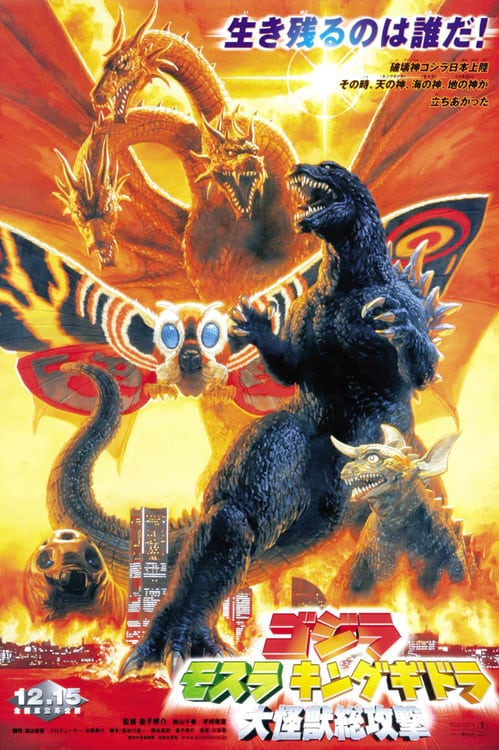
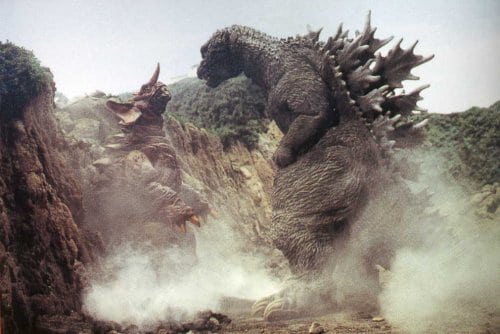





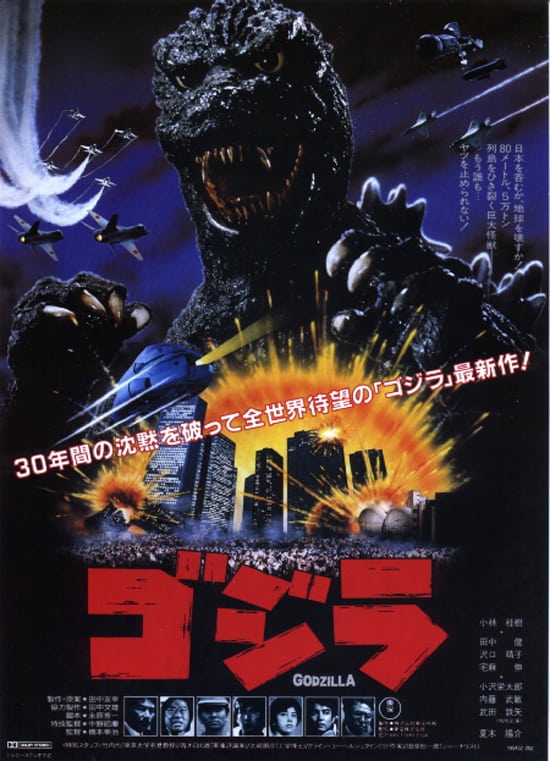
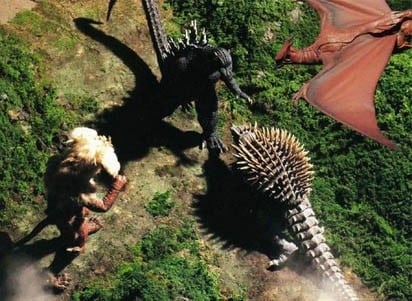
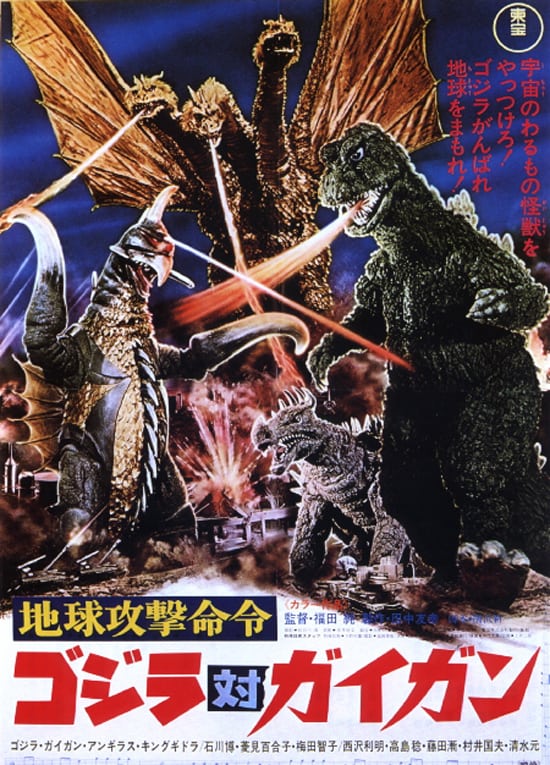
Be the first to comment